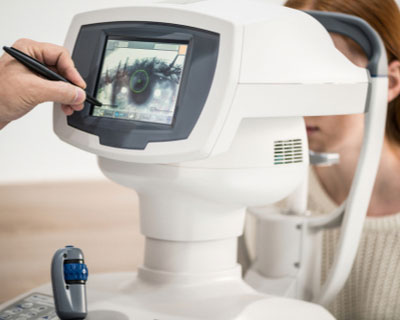Fuchs' dystrophy is a disease of the cornea. It is when cells in the corneal endothelium gradually die off. These cells normally pump fluid from the cornea to keep it clear. When they die, fluid builds up and the cornea gets swollen and puffy. Vision becomes cloudy or hazy.
Fuchs' dystrophy has two stages. In the early stage, vision is usually hazy in the morning. In the disease's second stage, vision remains blurry all day.
People in their 30s and 40s may have Fuchs' dystrophy but not know it. Vision problems might not appear until age 50 or later. Women are more likely than men to have Fuchs' dystrophy. Family history of Fuchs’ dystrophy also increases your risk of getting it.
What Are Fuchs' Symptoms?
In the early stage (stage 1) of Fuchs' dystrophy, you may notice few, if any, symptoms. Your vision may be hazy or blurry when you first wake up but improve throughout the day. This is because your eyes normally stay moist when they are closed during sleep. But when you are awake, the fluid dries normally.
In the later stage (stage 2), your blurry or hazy vision will not get better as the day goes on. Too much fluid builds up during sleep and not enough dries up during the day. Also, tiny blisters may form in the cornea. The blisters get bigger and eventually break open, causing eye pain. Here are other symptoms:
- Sandy or gritty feeling in your eyes
- Being extra sensitive to bright light
- Eye problems get worse in humid areas
- Very blurry or hazy vision from scarring at the center of the cornea
Fuchs' Diagnosis
Your ophthalmologist will look closely at your cornea and measure its thickness. This is called pachymetry. They will also check for tiny blisters on the front surface of the cornea and drop-like bumps of the back surface of the cornea (guttae). Using a special photograph of your cornea, your ophthalmologist may count your endothelial cells.

Fuchs' Treatment
There is no cure for Fuchs’ dystrophy. However, you can control vision problems from corneal swelling. Your treatment depends on how Fuchs’ dystrophy affects your eye’s cells.
Here are treatments for early Fuchs’ dystrophy:
- Use an eye drop medicine or ointment to reduce swelling of the cornea’s cells.
- Use a hair dryer, held at arm’s length, to blow warm air on your face. This helps dry the surface of your cornea.
For very poor vision or scarred corneas, you may need a corneal transplant. This surgery could be one of two types:
- Endothelial keratoplasty (EK): Healthy endothelial cells are transplanted into your cornea.
- Full corneal transplant: The center of your cornea is replaced with a healthy donor cornea.
Your ophthalmologist will discuss what treatments are best for your condition.